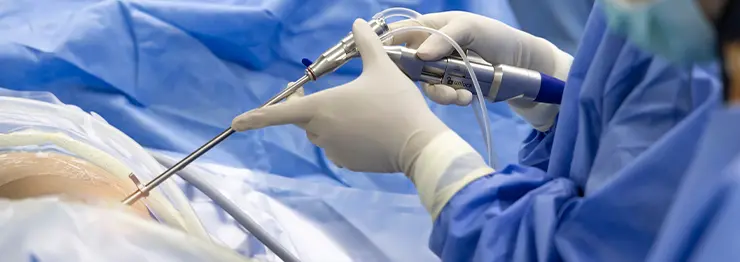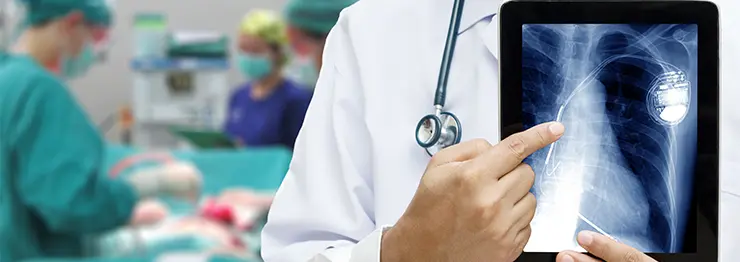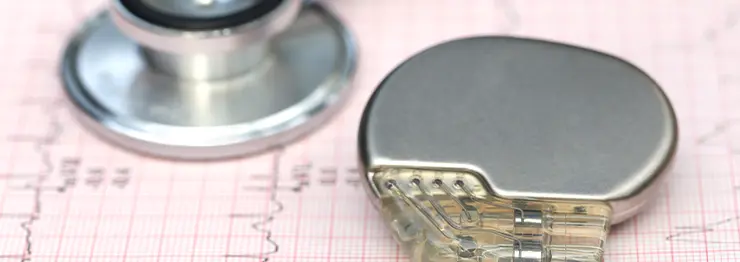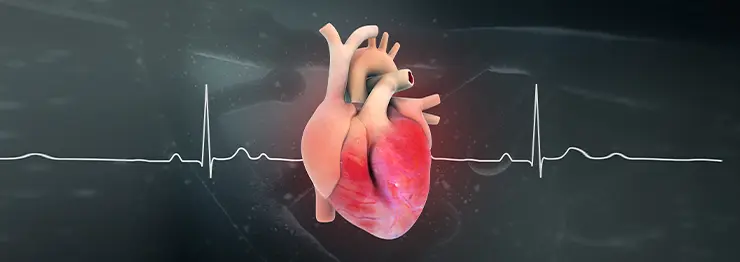Complex coronary interventions
TAVI
BAV / BMV / BPV
Device closure - ASD/ VSD / PDA
CTR and conduction system pacing
CABG

These minimally invasive procedures are designed to open blocked or clogged coronary arteries. These are the vessels that supply oxygen-rich blood to your heart muscle. Blockages can occur due to plaque build-up, a condition known as atherosclerosis. CMCA, CTO, and Bifurcation Stenting utilise thin, flexible tubes called catheters to reach the blocked artery. A tiny balloon is then inflated within the blockage to open it, often followed by a stent placement – a small mesh tube that helps keep the artery open. These procedures can improve blood flow to the heart, reducing chest pain and shortness of breath. Depending upon the complexities and severity the procedure may take anywhere from one to three.

TAVI or Transcatheter Aortic Valve Implantation is a procedure that is performed under local anaesthesia and offers a new approach to replacing a narrowed aortic valve. It is the valve that controls blood flow from the heart's main chamber to the largest artery in the body called the aorta. The procedure is minimally invasive, unlike traditional open-heart surgery. A catheter is inserted through an artery in your leg or groin and guided to the heart. The new valve is then deployed within the diseased valve, effectively replacing it. TAVI is a viable option for patients who may be at high risk for traditional surgery.

BAV (Balloon Aortic Valvuloplasty), BMV (Balloon Mitral Valvotomy) and BPV (Balloon Pulmonary Valvotomy) are types of minimally invasive intervention in which a heart valve is repaired or replaced. A balloon catheter is used to dilate a stenotic heart valve. This helps to improve heart functions that allow better blood flow in the heart. Depending on the specific valve and its condition, our experienced surgeons can perform either valve repair (BAV/BMV) or valve replacement (BPV). During repair procedures, the surgeon strengthens or reshapes the existing valve leaflets to improve their function. In valve replacement, the diseased valve is removed and replaced with a mechanical or biological prosthetic valve.

Device closure, also known as transcatheter closure, is a minimally invasive procedure that treats the defects on the right and the left sides of the heart. In some cases, abnormal openings can exist in the walls of the heart between chambers. These openings, known as atrial septal defects (ASD), ventricular septal defects (VSD), or patent ductus arteriosus (PDA), can allow blood to flow abnormally. Our cardiologists can close these openings using the above-mentioned catheter-based procedure. A small device is inserted through a catheter and positioned to close the defect, redirecting blood flow and improving heart function.

CTR or Cardiac Resynchronization Therapy and Conduction System, involves implanting a device in the chest to make the heart’s chambers contract more efficiently and effectively. For patients with heart failure and abnormal heart rhythms, CRT and pacing devices can help regulate the heartbeat. CRT implants a pacemaker with additional leads to coordinate contractions between the heart's chambers, improving pumping efficiency. Traditional pacemakers send electrical signals to stimulate the heart muscle to beat at a regular rhythm. These devices can significantly improve the quality of life for patients with heart failure.

This procedure is commonly known as bypass surgery, and it is done to restore blood flow in a narrow or blocked artery. It involves an open-heart surgery that requires a large incision to be made to access the chest cavity. The surgeon removes a blood vessel from one part of your body and uses it to divert blood flow away from the blocked coronary artery to restore the blood flow. A blocked or narrowed artery severely increases the strain on the heart and will eventually result in heart failure.
Complex coronary interventions

These minimally invasive procedures are designed to open blocked or clogged coronary arteries. These are the vessels that supply oxygen-rich blood to your heart muscle. Blockages can occur due to plaque build-up, a condition known as atherosclerosis. CMCA, CTO, and Bifurcation Stenting utilise thin, flexible tubes called catheters to reach the blocked artery. A tiny balloon is then inflated within the blockage to open it, often followed by a stent placement – a small mesh tube that helps keep the artery open. These procedures can improve blood flow to the heart, reducing chest pain and shortness of breath. Depending upon the complexities and severity the procedure may take anywhere from one to three.
TAVI

TAVI or Transcatheter Aortic Valve Implantation is a procedure that is performed under local anaesthesia and offers a new approach to replacing a narrowed aortic valve. It is the valve that controls blood flow from the heart's main chamber to the largest artery in the body called the aorta. The procedure is minimally invasive, unlike traditional open-heart surgery. A catheter is inserted through an artery in your leg or groin and guided to the heart. The new valve is then deployed within the diseased valve, effectively replacing it. TAVI is a viable option for patients who may be at high risk for traditional surgery.
BAV / BMV / BPV

BAV (Balloon Aortic Valvuloplasty), BMV (Balloon Mitral Valvotomy) and BPV (Balloon Pulmonary Valvotomy) are types of minimally invasive intervention in which a heart valve is repaired or replaced. A balloon catheter is used to dilate a stenotic heart valve. This helps to improve heart functions that allow better blood flow in the heart. Depending on the specific valve and its condition, our experienced surgeons can perform either valve repair (BAV/BMV) or valve replacement (BPV). During repair procedures, the surgeon strengthens or reshapes the existing valve leaflets to improve their function. In valve replacement, the diseased valve is removed and replaced with a mechanical or biological prosthetic valve.
Device closure - ASD/ VSD / PDA

Device closure, also known as transcatheter closure, is a minimally invasive procedure that treats the defects on the right and the left sides of the heart. In some cases, abnormal openings can exist in the walls of the heart between chambers. These openings, known as atrial septal defects (ASD), ventricular septal defects (VSD), or patent ductus arteriosus (PDA), can allow blood to flow abnormally. Our cardiologists can close these openings using the above-mentioned catheter-based procedure. A small device is inserted through a catheter and positioned to close the defect, redirecting blood flow and improving heart function.
CTR and conduction system pacing

CTR or Cardiac Resynchronization Therapy and Conduction System, involves implanting a device in the chest to make the heart’s chambers contract more efficiently and effectively. For patients with heart failure and abnormal heart rhythms, CRT and pacing devices can help regulate the heartbeat. CRT implants a pacemaker with additional leads to coordinate contractions between the heart's chambers, improving pumping efficiency. Traditional pacemakers send electrical signals to stimulate the heart muscle to beat at a regular rhythm. These devices can significantly improve the quality of life for patients with heart failure.
CABG

This procedure is commonly known as bypass surgery, and it is done to restore blood flow in a narrow or blocked artery. It involves an open-heart surgery that requires a large incision to be made to access the chest cavity. The surgeon removes a blood vessel from one part of your body and uses it to divert blood flow away from the blocked coronary artery to restore the blood flow. A blocked or narrowed artery severely increases the strain on the heart and will eventually result in heart failure.
Top specialists. Advanced technology. Exceptional healthcare.
